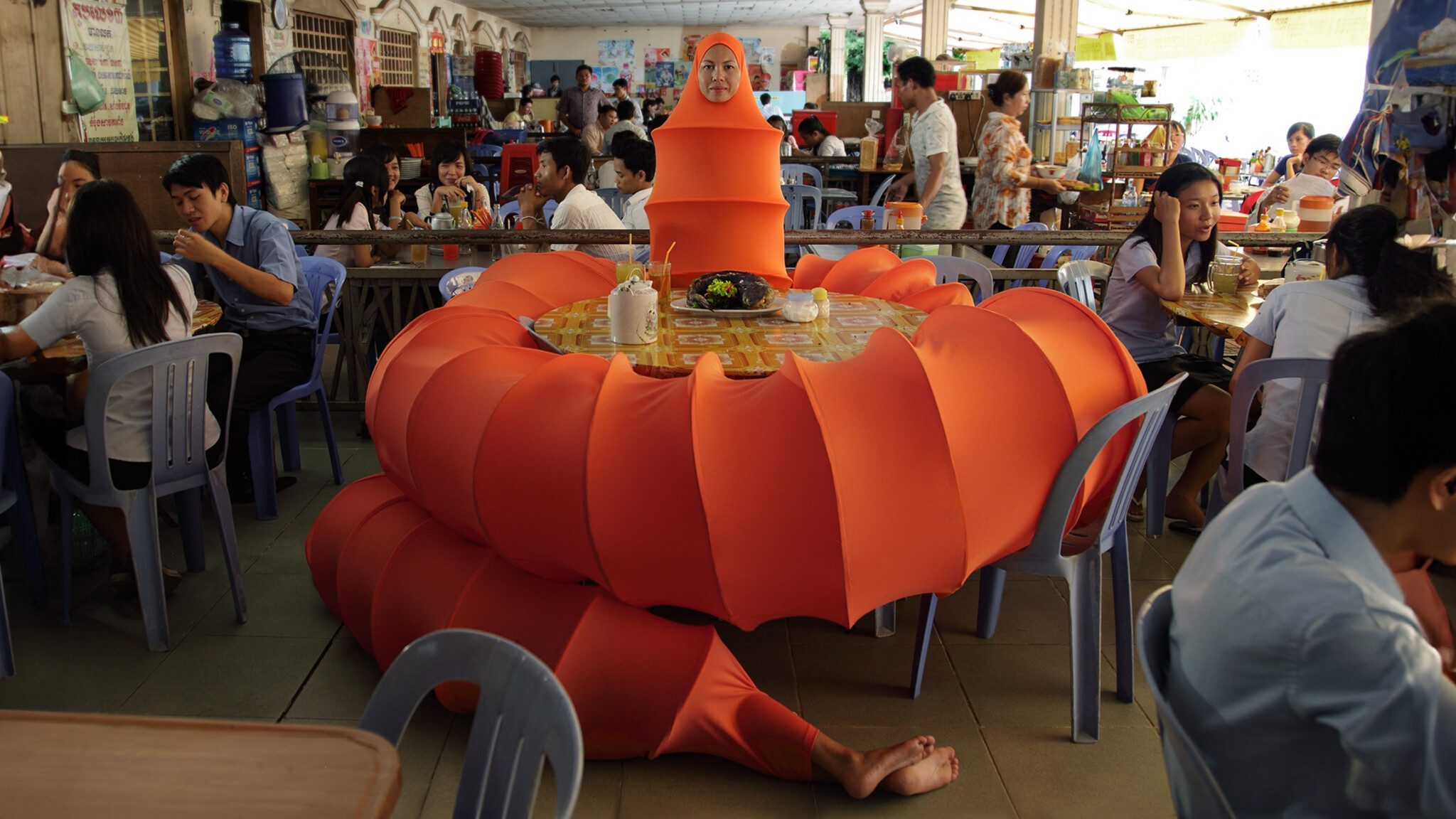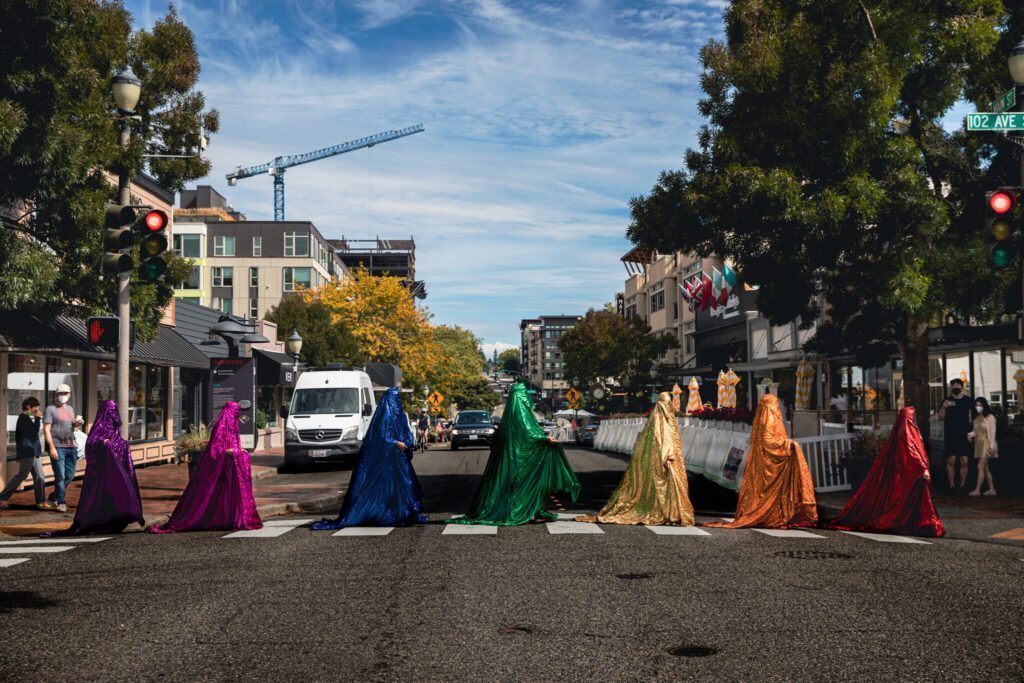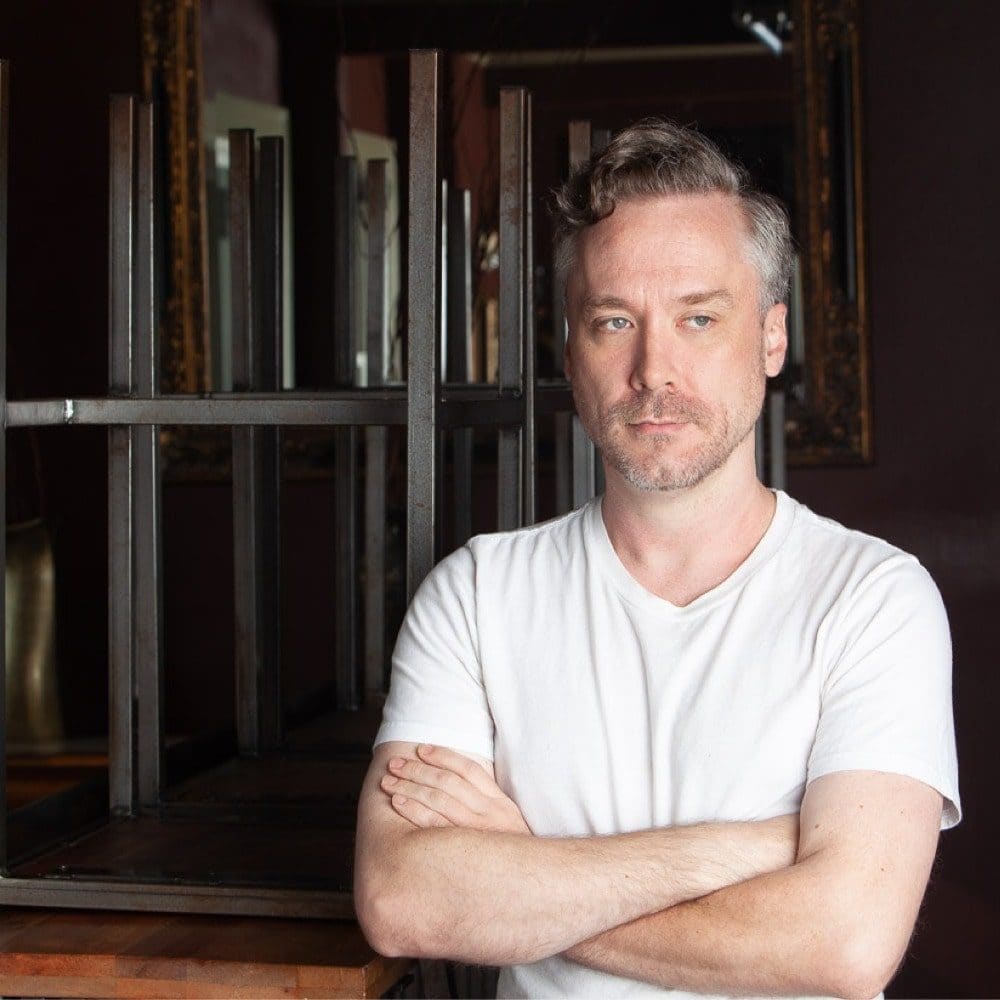Seattle Culture
‘The Buddhist Bug’ and ‘The Red Chador’
Artist Anida Yoeu Ali’s work looks to absurdity and humor for deeper understanding
By Annie Midori Atherton January 29, 2024

This article originally appeared in the March/April 2024 issue of Seattle magazine.
Anida Yoeu Ali draws inspiration from her personal experience as a first-generation American of mixed Malay, Cham, Khmer, and Thai ancestries. Born in 1974 in Battambang, Cambodia, she fled with her family to the U.S. and was raised in Chicago. She now serves as a senior artist-in-residence at University of Washington Bothell and is the co-founder of Studio Revolt, an independent media lab. Her show, on view through July 7 at Seattle Asian Art Museum, is the first solo exhibition for an artist since the museum reopened in 2020.
Anida Yoeu Ali: Hybrid Skin, Mythical Presence features two performance-based artworks. The Buddhist Bug, a bright orange creature that snakes through multiple rooms and measures nearly 100 meters in length, evokes both the orange worn by Buddhist monks and, when embodied by Ali, the hijab worn by Muslim women. The Red Chador tells the story of how a sparkling chador – a large cloth worn as a head covering, veil, and shawl by some Muslim women – traveled the globe, went “missing” after Ali was temporarily detained in Tel Aviv, and was reborn two years later along with six other rainbow chadors.
The works are accompanied by sculpture, video, photography, and installation art. They are vivid, deeply strange and incredibly joyful, even as they raise tough questions about identity and belonging. We spoke to Ali about her art, her creative process and the political salience of art.

Water Birth, The Red Chador: Genesis I, Kaiona Beach, Oahu, U.S., 2019, Anida Yoeu Ali, Cambodian American.
Photo by Masahiro Sugano
Q: How do you think your work will be received in Seattle?
A: I don’t know how some of the more politically charged works like The Red Chador will be received. It’s so contentious to say anything about Israel and Palestine, and I hope that doesn’t interfere with the work. I’m most interested in reaching the audiences who might see a bit of their story or a reflection of themselves. Maybe there’s a Muslim girl or Asian American girl who looks at this and says, “Oh my gosh, she’s Asian American, or she’s Muslim, or she’s a mother.”
Q: What misconceptions do you think Americans have about Cambodians?
A: They have this global impression of Cambodia as a country suffering, not only under dictatorship but also under the aftermath of the Khmer Rouge. But then we (Cambodians) have these glorious temples tourists flock to. It’s the “temples and trauma” cliche. So, it’s about showing a more contemporary image of Cambodia and Cambodians.

Live performance of The Buddhist Bug at Wei-Ling Contemporary Gallery, Kuala Lumpur, Malaysia, 2019, Anida Yoeu Ali, Cambodian American.
Photo by Nina Ikmal
Q: A lot of artists who have immigrated or fled their home country address the theme of identity fragmentation, but The Buddhist Bug seems to express more of a “stretching” across space.
A: We’re told that fragmentation is having to split our Asian-ness or our American-ness, our bicultural identities – that we have to become more whole. What I’m teasing out is what I call the diasporic dilemma. What I’ve figured out for myself, is that the in-between space, working in fragmentation is how I’m whole. It’s not pejorative. It’s inspiring, and motivates me to do more meaningful work. With the bug, she’s in segments because it was impossible to build her as a whole. She comes together to connect two distant points. That distance is a bridge, a tunnel, and a creature, connecting the idea that we can be over here and over there. We can do this in-between thing. That’s why she can expand but she can also coil if the space requires that she become smaller.
Q: We often think of bugs as undesirable, but this creature doesn’t see herself that way, does she?
A: She’s an odd creature and everybody’s going to look and gawk. But, for the bug herself, she doesn’t realize she’s odd and foreign. For her, she’s the perfect size for every situation. She’s malleable and adjusting to the spiral staircase. She’s adjusting to the boat on the orange river. She’s flexible. She fits perfectly and she belongs. It’s everybody else who’s looking at her, as if she’s foreign and extraterrestrial.

Abbey Road, The Red Chador: Genesis I, Main St. & 102nd Ave., Bellevue, U.S., 2021, Anida Yoeu Ali, Cambodian American.
Photo by Dylan Maddux
Q: You talk a lot about youth and the importance of youth culture. Do you hope people bring their families, including kids and teenagers?
A: Absolutely. I think they’ll be curious about the work. They’ll be the ones to ask questions and they’ll be able to see parts of youth culture from around the world. Genesis I taps into the hip hop culture of Honolulu. And that’s always fun to see breakdancing and the DJ, because it’s such an important part of Hawaiian culture.
Q: You got the idea for the tunnel when your daughter was young and played with a similar tunnel. How has being a parent of three influenced you as an artist?
A: I’m always interested in tricking people into complicated conversations and using humor and color. People, when they know it’s about religion and politics, avoid it, but I think when you massage them into it, it feels better. That’s definitely influenced by kids. We think we shouldn’t tell them things, but they are much more open than adults.
Q: You’ve said your work is about joy and the absurd. What is the role of these concepts in today’s world?
A: Humor gets us through a lot. I experienced that in the pandemic. Everybody’s interested in trying to find moments of joy in this daunting situation. But also, with the rise of populist figures like Trump and other world leaders swinging to ultra-right wing, conservative politics, we need humor. We need joy and the ability to laugh at ourselves. There’s a surrealism and an absurdity in The Buddhist Bug. There’s this tubular structure with a woman’s face and a pair of legs sticking out. The bug is in a classroom, or on a spiral staircase, which is ridiculous. And then there’s The Red Chador, where the absurdity is in the different installations.

Anida Yoeu Ali. Image courtesy of Wei-Ling Contemporary Gallery.
Photo by Leong Wei Cheong
Q: You moved to Tacoma in 2016. What brought you there?
A: My husband (Masahiro Sugano) and I toured our film Cambodian Son in the area a few times and Tacoma was always a pit stop for meeting up with other Southeast Asian Americans. It’s a midsize city with an edge. We’re so happy we made the choice to live in Tacoma. It’s a really good fit for our family.
On two occasions this spring, Ali will become part of these works. The Buddhist Bug will be performed at the Seattle Asian Art Museum on March 23. The Red Chador will be performed in collaboration with six community participants at the Olympic Sculpture Park, the Seattle Art Museum, and the Seattle Asian Art Museum on June 1.




